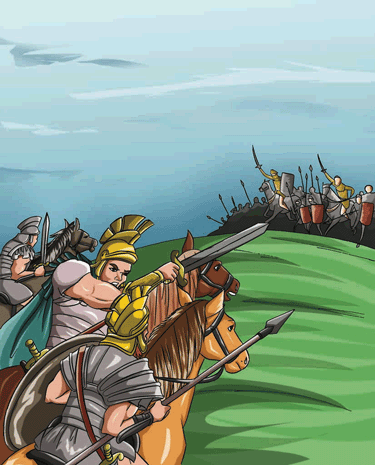The Romans legacy
It is important to remember that the Romans brought many good things to Britain. They improved trade and the quality of life for many Britons.
Roman towns showed the Britons that life could be comfortable and pleasant.
Roman laws meant that arguments could be settled peacefully. Some of our modern laws are based on Roman laws.
The Romans brought milestones to Britain. This drawing shows a stone milestone from Hadrian’s reign. Originally it would have stood 2-3 metres high. The letters ‘MPIIII’ mean ‘four miles from...’
Other things the Romans brought to Britain
Lead pipes
Roof tiles
Cats
Wigs
False teeth
Cabbages
Carrots
Peas
Cherries
Plums
Roses
Pansies
Poppies
Stinging nettles
Many of our words are based on Latin words. The Romans gave us the names of all our months.
JANUARY named after the Roman god JANUS. He could look both ways at once because he had two faces, and was the god of gateways
FEBRUARY named after the Roman festival of FEBRUA
MARCH named after MARS, the Roman war god
APRIL from the Latin word APERIRE meaning ‘to open’ – because of the unfolding of buds and blossom in spring
MAY named after MAIA, the Roman mother goddess
JUNE named after JUNO, wife of Jupiter, King of the Roman gods
JULY named after JULIUS Caesar, who decided that the year should begin in January. Until then it had begun in March.
AUGUST named after the Roman Emperor AUGUSTUS
SEPTEMBER from the Latin word SEPTEM, meaning ‘seven’. It was originally the seventh month of the year
OCTOBER from the Latin word OCTO, meaning ‘eight’. It was originally the seventh month of the year
NOVEMBER from the Latin word NOVEM, meaning ‘nine’. It was originally the ninth month of the year
DECEMBER from the Latin word DECEM, meaning ‘ten’. It was originally the tenth month of the year




